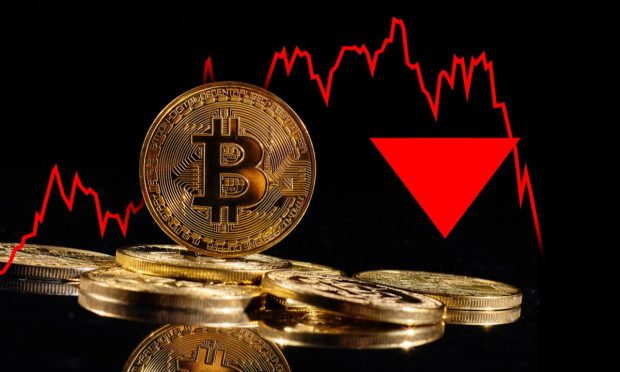Crypto Winter II: When, How Cold, How Long

If you’ve been reading any crypto news or following it on Twitter, you’ve heard warnings that a “crypto winter” may be coming.
With the market capitalization of the total cryptocurrency market at $1.6 billion, almost half of the $3 trillion it reached at the height of the bull market in November, it’s clear that a bear market is running rampant. Despite a slight upturn this week, most of the top 20 cryptocurrencies by market cap are off at least 20% to 40%, with one — the favorite Ethereum Killer Solana — down almost 50%.
See also: Behind Bitcoin’s Collapse, Financial Fears Are Routing Faith in Crypto
This isn’t just insider talk. On Tuesday (Jan. 25), CNBC reported, “Investors fear ‘crypto winter’ is coming as bitcoin falls 50% from record highs.”
Barron’s had a similar story last week, and on Jan. 7, Bloomberg quoted Oppenheimer & Co. analyst Owen Lau warning that “dropping cryptocurrency prices could drive lower trading volume when it gets to the point to discourage traders to get engaged. There is a possibility that digital assets price to go flat such as getting into a crypto winter after a price decline.”
So, what’s a crypto winter and how does it relate to a bear market?
In one sense, it’s just about longevity. A bear market is part of the normal rise and fall of any financial market. But a “winter” is something that has staying power. The biggest crypto winter hit in late 2018, after Bitcoin’s first real bull run neared $20,000. It wasn’t until May 2019 that Bitcoin began to climb again after diving into the $3,000 range. It wasn’t until November of 2020 that BTC reached its previous all-time high (and boomed, reaching past $58,000 by April 2021.
But a crypto winter is worse than that: It’s a broader loss of confidence in the industry as a whole by more main street investors and institutions — anyone outside core crypto supporters. Investment in crypto projects such as decentralized finance, or DeFi, would stop, and potential new retail investors pull back.
The 2018 crypto winter wasn’t just demarcated by crypto prices falling across the board. Goldman Sachs put plans for a crypto trading desk on a “hiatus” that lasted until last March.
And, it also coincided with — or at least was helped along by — a new regulatory push that limited investments. In that case it was the Securities and Exchange Commission’s attack on initial coin offerings, or ICOs, as illegal securities offerings. That push is ongoing with its lawsuit against Ripple, but can also be seen in Chairman Gary Gensler’s aggressive push for control of digital assets oversight.
Read more: Gensler: SEC Is Coming for Crypto Exchanges
And there’s more. Stablecoin regulation is becoming a very big fight, with growing clashes over how harshly to regulate them.
You may like: Powell, Yellen Clash Over Stablecoin Regulation at Senate Hearing
Decentralized finance has received similar attacks for the ease with which unknowledgeable investors can rack up large losses.
Related: Sen. Warren Calls DeFi the ‘Most Dangerous’ Part of Crypto at Senate Hearing
Is it Crypto Winter II?
In August, shortly after the industry began recovering from a bear market that had also seen cryptocurrencies plummet across the board — Bitcoin broke below $30,000, well under half of its April 2021 high — Coinbase CEO Alesia Haas told the Wall Street Journal that the Nasdaq-listed exchange had increased its reserves from $1.1 billion to $4.4 billion.
“We want to ensure that we maintain those cash reserves so that we can continue to invest and continue to grow our products and services in the event that we go into a crypto winter,” she said.
And yet, there are bulls aplenty at the moment. On Thursday (Jan. 20), top venture capital firm Andreessen Horowitz began raising a new fund of $3.5 billion — and possibly as much as $4.5 billion — for digital asset investments through its a16z crypto arm. That’s on top of the $2.2 billion it raised in June.
Crypto exchange FTX launched a $2 billion venture fund on Jan. 14.
Individual blockchain segments are also still seeing support. Crypto payments provider BCN Group just closed a $60 million Series A round, showing that investors are looking beyong DeFi and NFTs to companies bringing real-world applications to blockchain technology.
And despite steep rises and falls last year, investors poured $31.6 billion into crypto start-ups in 2021 — nearly seven times the amount raised in 2020, according to PitchBook.
So far this year VC firm Bloom Capital raised $432 million, and top NFT marketplace OpenSea was valued at $13.3 billion in a $300 million funding round.
Ultimately, it is investment that will determine if the current bear market is the start of Crypto Winter II, and whether it will be a brutal Northeastern freeze or mild Southern chill.
